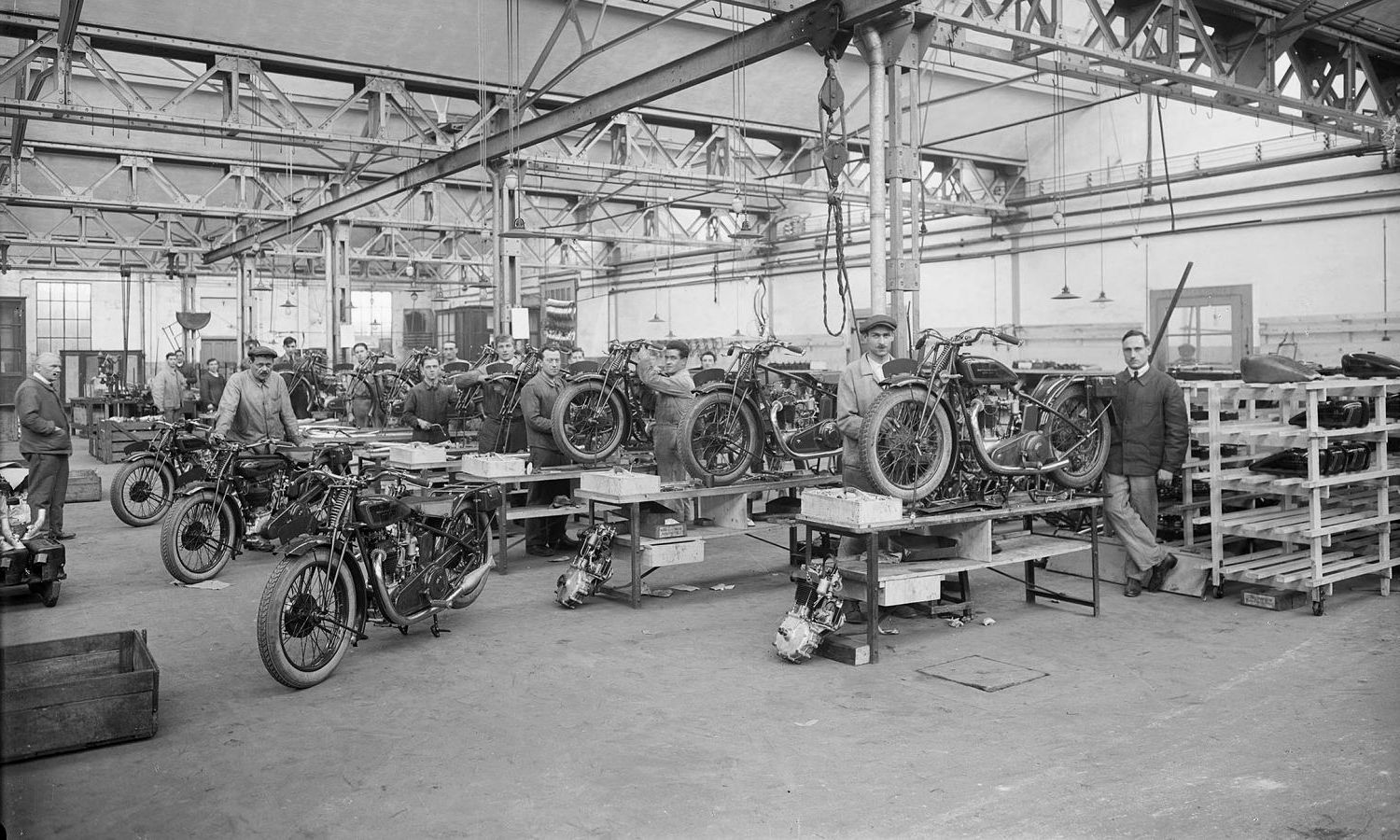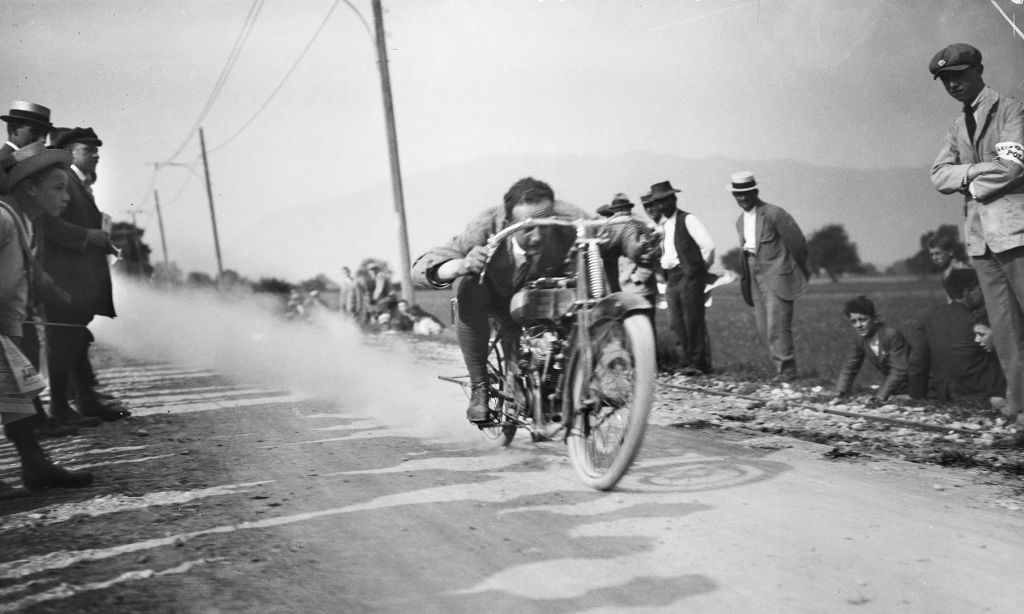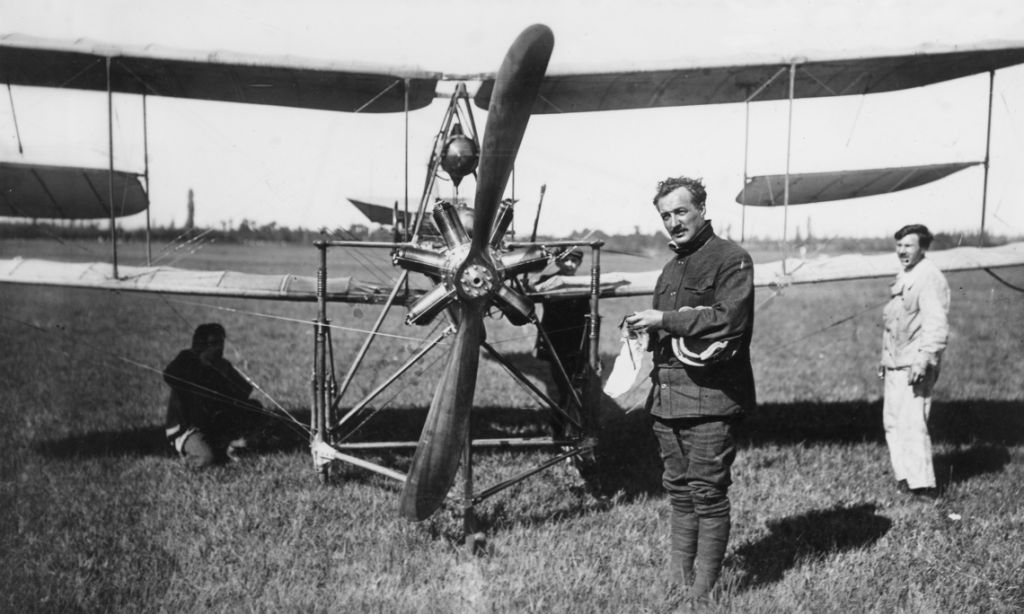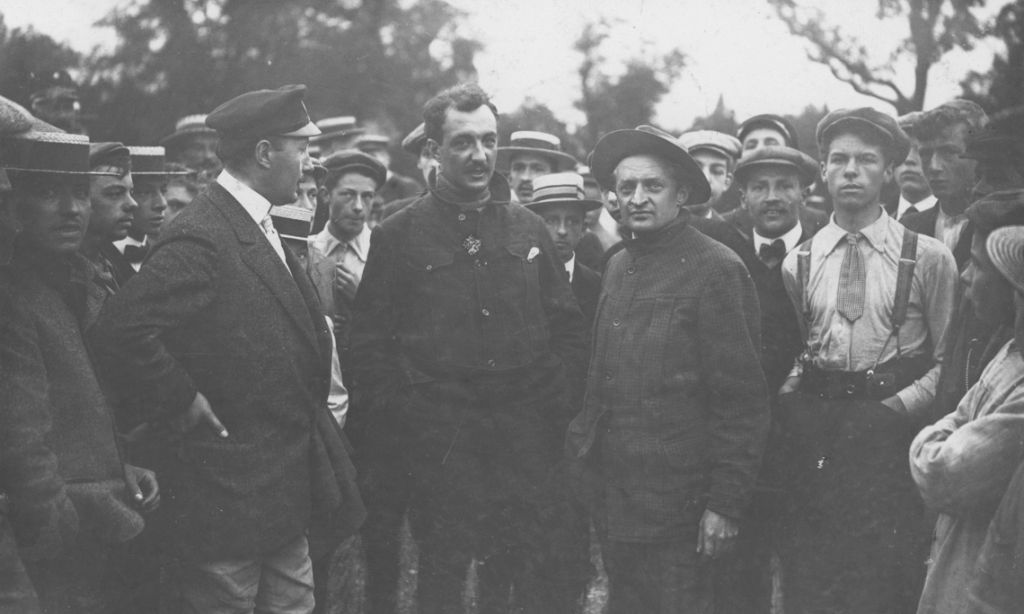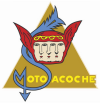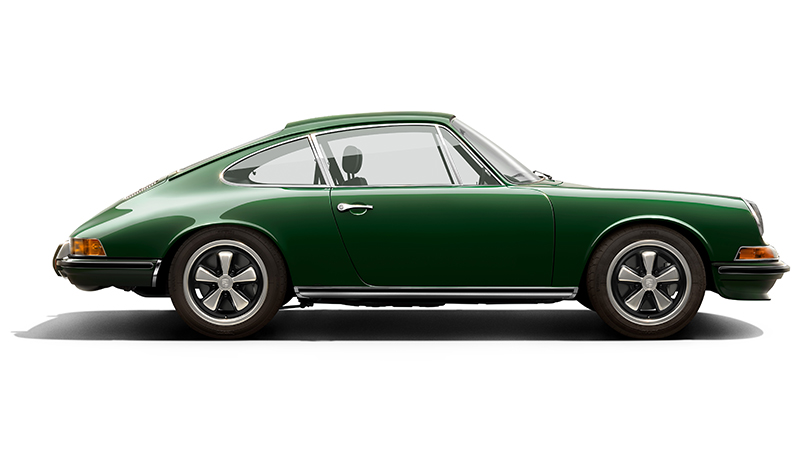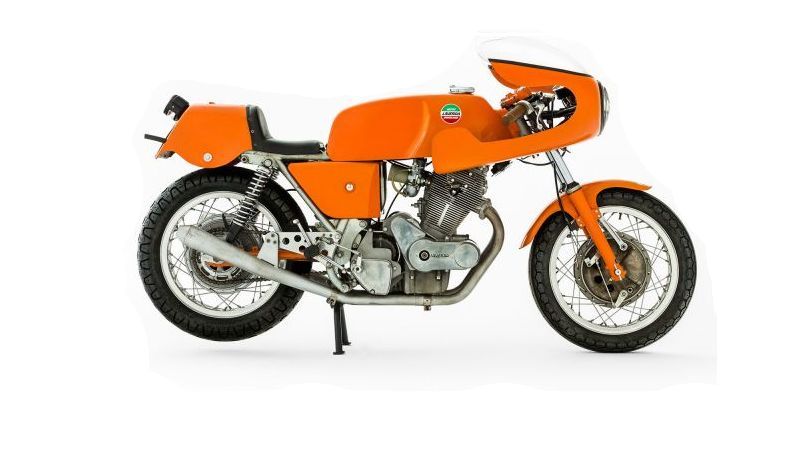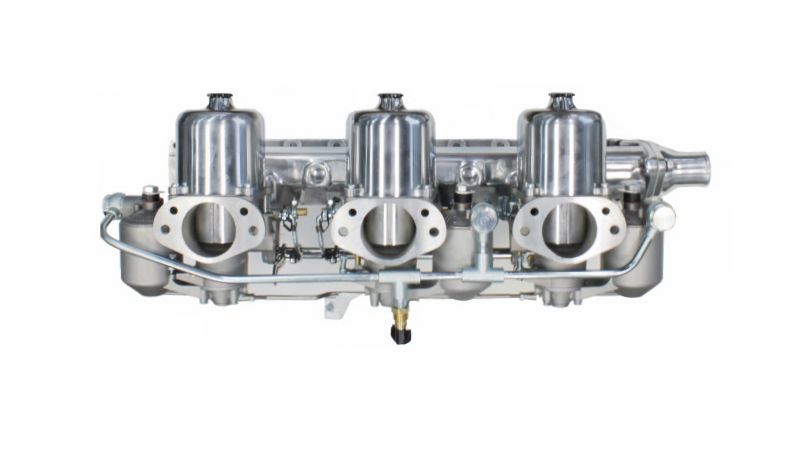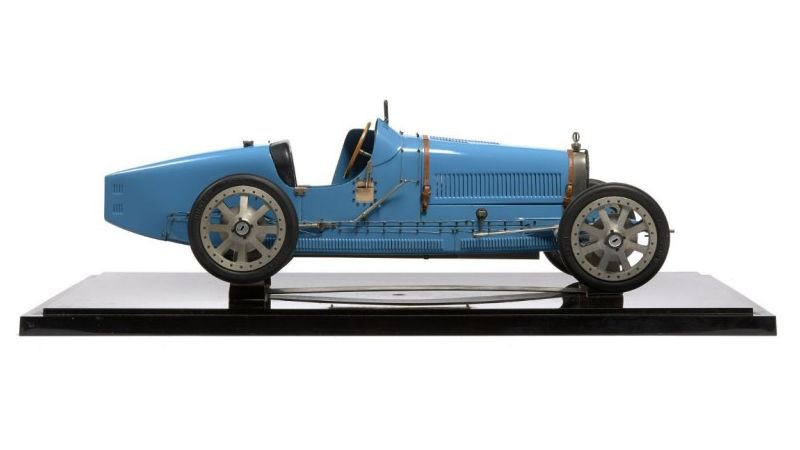Motosacoche Motorcycles
M.A.G - Motosacoche Acacias Genève
JB | October 2008
While at the beginning of the 19th century Europe dreamed of installing engines on its pedal-driven bikes, Henri and Armand Dufaux had a brilliant idea they called Moto-Sacoche, French for - Engine in a Satchel - a little power pack that would fit any bicycle.
Henri was born on the 18th of September 1879 in Chens-sur-Léman, Armand on January the 13th, 1883 in Paris. Children of French Baroness Rochefort Luçay and painter, sculptor and portraitist, Frédéric Dufaux, their maternal grandfather was the politician and writer Victor Henri, Marquis of Rochefort-Luçay.
The two brothers shared tasks: Henri, a graduate of the Geneva School of Fine Arts, conceived inventions while Armand, very gifted in mechanics, ensured their technical development. Over the years, the Dufaux brothers showed engineering pioneerism in aeronautics, as well as in the world of automobiles and motorcycles.
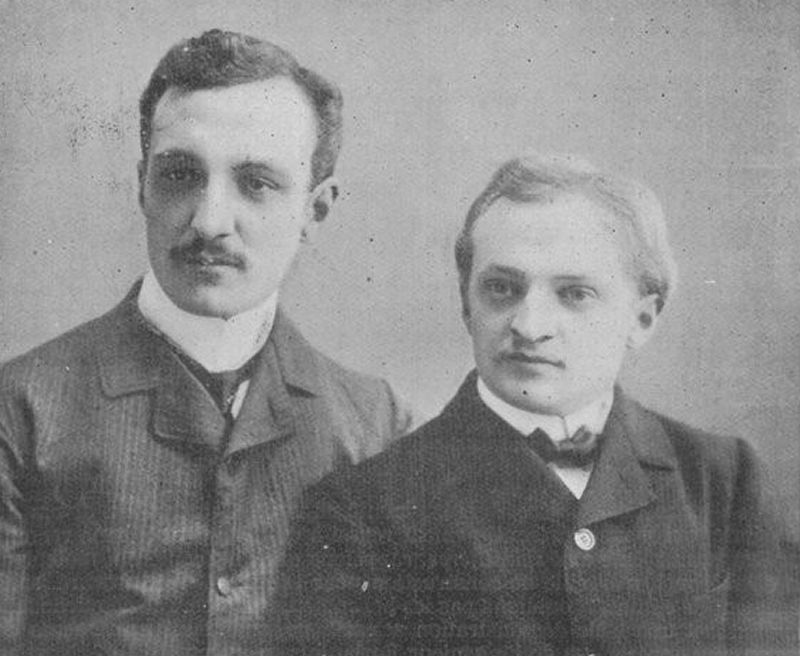
Armand & Henri Dufaux, aeronautics, automobiles & motorcycles pioneers
Having had the idea, they had to make it work. So in 1898 while they were only 19 and 15 years old and lived with their parents in the rue de Lausanne, Geneva, the Dufaux brothers started creating an auxiliary engine in a sub-frame, which could be installed into any conventional bicycle.
The Dufaux invention consisted of a rigid triangular framework housing the engine and all its accessories that could simply be clipped inside any standard diamond cycle frame by seven wing-nuts. It weighed only 14 kg and was just 8 cm wide.
In 1899, they established H & A Dufaux Fils (HADF) in Carouge, Geneva, with the support of automotive pioneers François Cuillery and Edouard Demole.
The same year they started to develop a second engine, and patent No 21167 was granted in 1901. This single cylinder 215 cc four-stroke engine weighed just 18 kg, delivered 0,25 hp at 1.200 rpm and was capable to accelerate a bicycle up to 21 km/h.
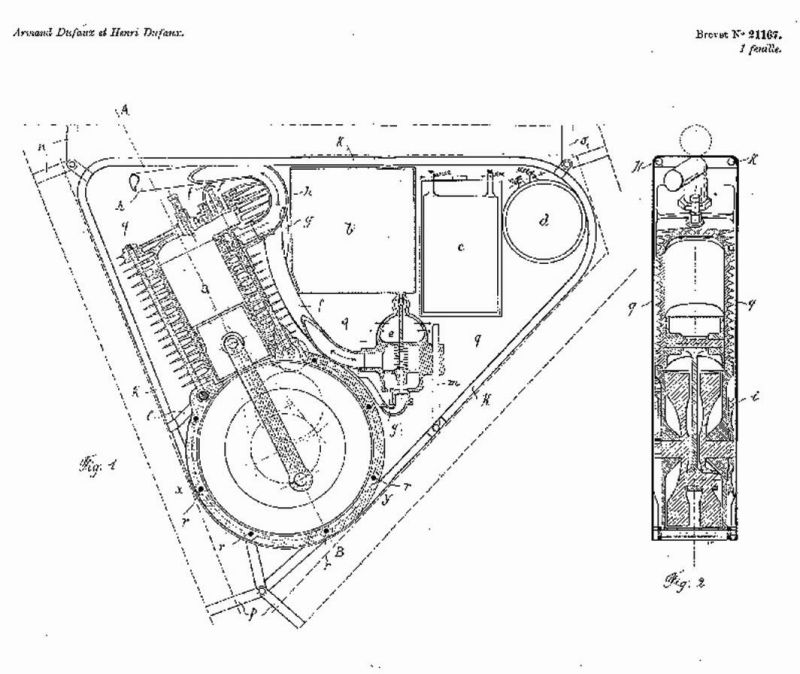
Motosacoche auxiliary engine in a sub-frame Patent No 21167
On the 13th of October 1901, the Dufaux brothers won the famous course de Côte de la Col de la Faucille hillclimb between Trélex and Saint-Cergue. It took them 21:20 minutes to complete the 10.650 km mountain pass climbing 678 meter with a never be seen average speed of 27.5 km/h.
Two years later, Armand Dufaux and François Cuillery won the 1,000 km of Paris organized by the Motorcycle Club of France. They started to market their engine in a bag under the Motosacoche brand and created a second workshop in the rue du Grand-Bureau 22. The company name became H & A Dufaux & Cie (HADCo).
On the 25th of June 1904, Henri and Armand Dufaux showed the aptness of a Motosacoche by climbing the Salève mountain in Haute-Savoie with two bicycles fitted with their famous engine. An unpaved road with a slope percentage of up to 20%.
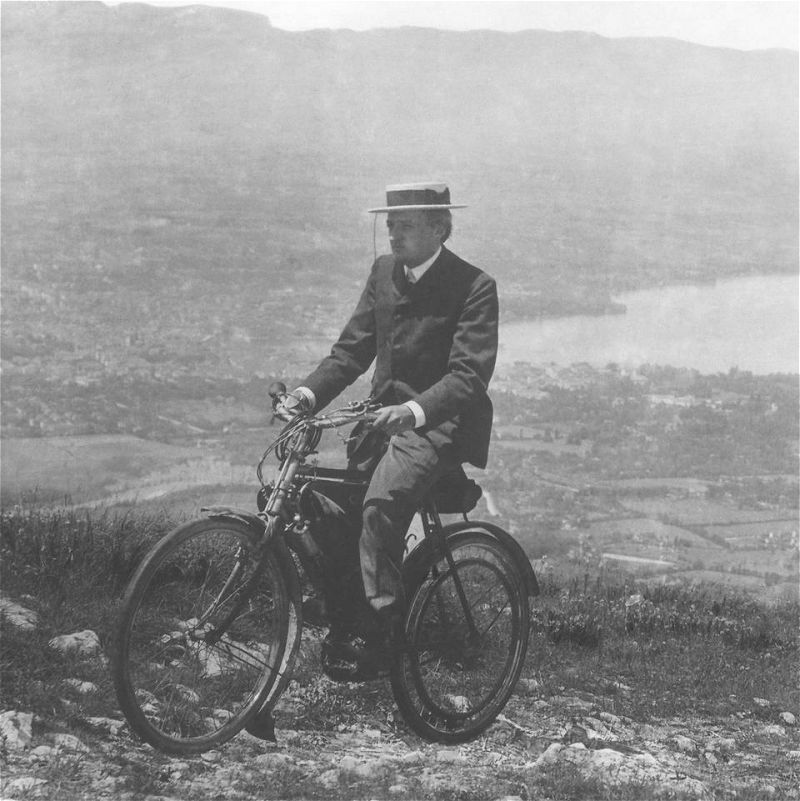
Henri Dufaux on a Motosacoche Type-A climbing the Salève mountain in Haute-Savoie
Public demand of their Motosacoche in a bag engine led them to enlarge the factory and to also start to produce bigger displacement motorcycle engines under the M.A.G brand. They opened a third factory in the rue des Caroubiers.
In 1905, the Motosacoche plant at the Route des Acacias 56-58 was created. Engine capacity gradually increased, twin cylinders were produced and the initial idea of a motorized pedal-bike was given up. This fourth factory produced 30 to 35 complete motorcycles per day.
The company was then registered as Motosacoche S.A. Dufaux & Cie (MSADC), but Armand and Henri Dufaux became more and more interested in aeronautics and concentrated on building highly successful helicopters and airplanes.
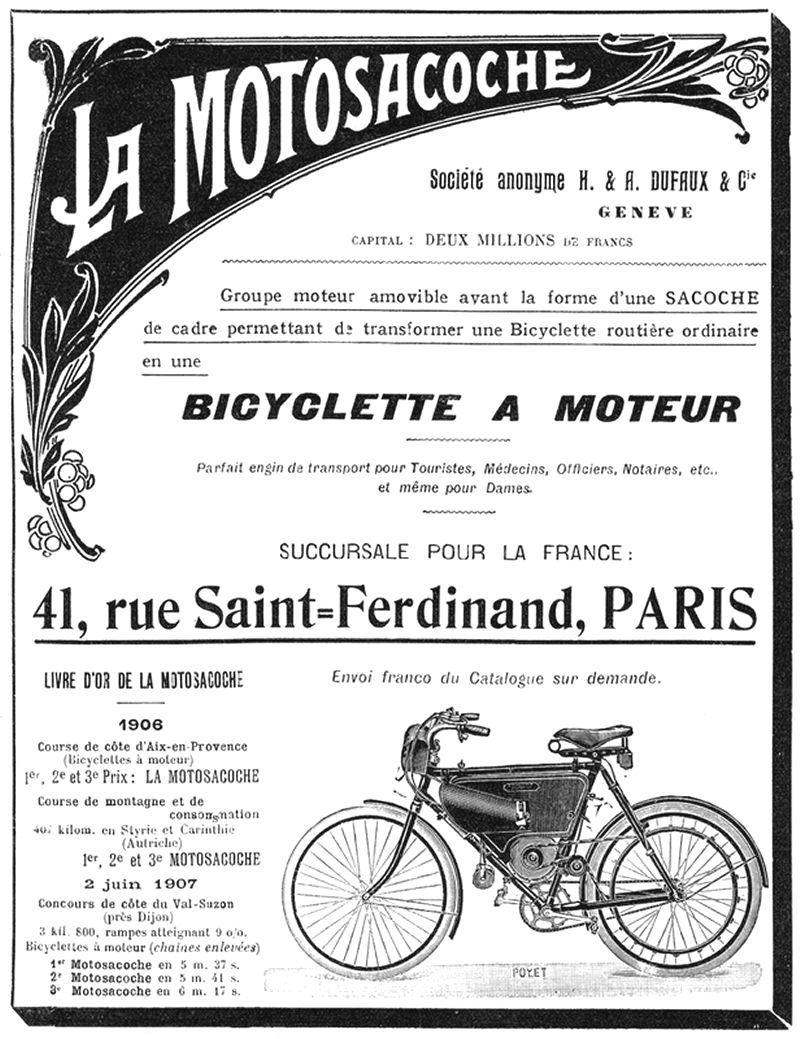
Motosacoche Type-A advertisement
In 1908, the Societa Meccanica Italio-Ginevrina Motosacoche factory in Turin opened its doors, with 300 factory workers producing 50 machines a day.
In June 1909, the HADCo was liquidated, and the Dufaux brothers had nothing anymore to do with Motosacoche.
The factory continued to built complete motorbikes under the Motosacoche label, and sold M.A.G engines to many well known manufacturers including AJW, Allegro, Bayern, Clement, Condor, Dresch, Goricke, Hamlet, Imperia, Lady, Monet Goyon, Morgan, Neander, New Hudson, Rex-Acme and Rovin. In France and Italy there were several factories producing Motosacoche motorcycles under M.A.G licence.
In 1910 Royal Enfield used Motosacoche 344 cc 2.75 hp engines in a successful V-twin model. In the UK, they are reputed to have supplied Triumph, Matchless, Ariel and Brough-Superior with engines at times too, first through H & A Dufaux England Ltd, and then, by 1912, Motosacoche Ltd (GB), through Osborne Louis de Lissa.
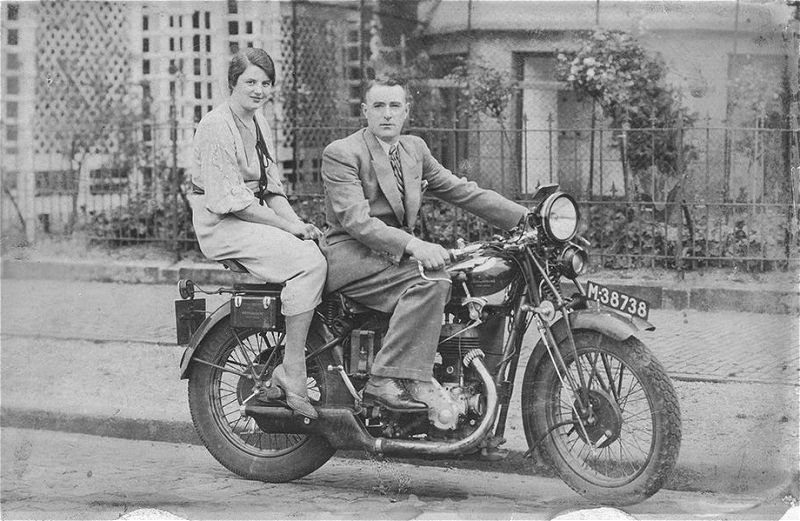
Drive your lady around in style
Success in countless racing events helped to create a solid reputation on the tracks. M.A.G. engines played an important part in Europe's motorcycling-scene, often compared with big names such as J.A.P.
The French G.P. winning Clement-Gladiator used a Motosacoche engine and in 1913 as well as 1914 the Matchless ohv-works-racers participating at Brooklands and the T.T. were equipped with M.A.G. engines.
When the Bol d'Or 24-hour event was first held on the outskirts of Paris in 1922 the winning rider covered more than 1206 kilometres on a 500 cc Motosacoche.
But it was not until 1928 that they made a name on the Grand Prix circuits, with the Motosacoche 350 M 35 ohc works-racers, built by Dougal Marchant, ridden to two European championship titles in both the 350 and 500 cc classes by Wal Handley.
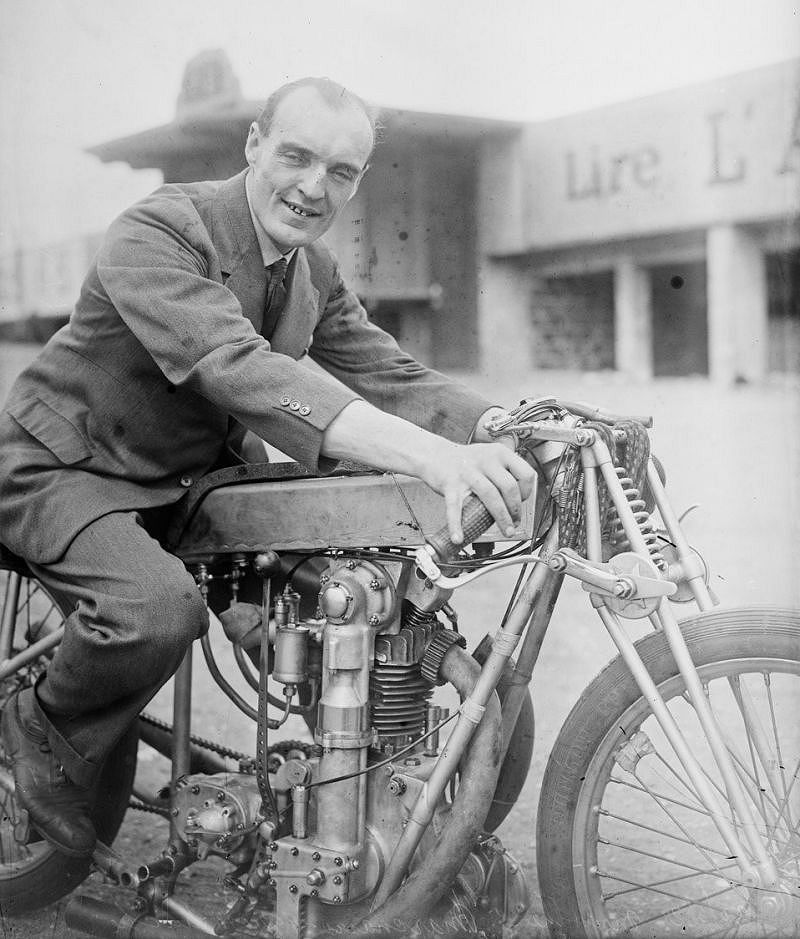
Dougal Marchant Motosacoche 350 M 35 ohc, Montlhéry 30 June 1927 © gallica.bnf.fr | BnF
Bert le Vack joined Motosacoche in the late 1920s. He had ridden in the 1914 Isle of Man Tourist Trophy and became the works rider, chief designer and tuner. Le Vack was killed in an accident in the Swiss Alps on 17 September 1931, while testing the Motosacoche A50 on public roads close to the factory.
Most of Motosacoche's excellent reputation was based on motorcycles for everyday-use. From the twenties until WW2 many 250, 350 and 500 singles as well as V-twins from 500 to 1000 cc provided long and loyal service to their proud owners.
Decline came in the thirties: Because of the general economic crisis the Jubilee-models, hence the silver jubilee of the company in 1930, appeared about one year too late on a weak market and on the racing tracks the superiority of the Nortons made it more and more difficult for M.A.G. to win any important events.
The enthusiasm had gone: From 1932 until the war, there was no real evolution in the Motosacoche range, besides a rather modest update of the once brilliant o.h.c. works-racers and a rather heavy rear suspension on some tourist models.
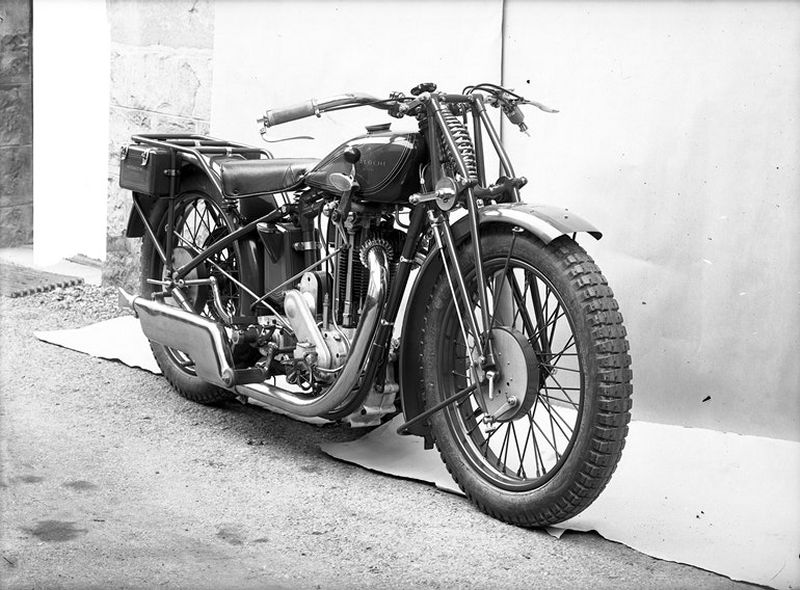
Motosacoche 1C with Overhead Valves © BGE
During WW2 many M.A.G.-engined motorcycles as well as side-cars under the Motosacoche and Condor labels helped the Swiss army to protect Switzerland from a menacing conflict.
After the war there was a first attempt to come back into business with a motorbike, equipped with a 200 cc side-valve engine. This somewhat unusual vehicle was designed by Dougal Marchant and presented at the 1947 Geneva motor-show. It remained a prototype and never got produced.
In 1953 Motosacoche gave it a last try. They bought German U.T. motorcycles designed by the excentric engineer Richard Küchen featuring a 250 ohc. twin, sprayed them in their familiar khaki colour and found out they had come too late anyway. Europe was hungry for scooters and most of all cars. By 1956 the last Motosacoche must have been sold, and the firm kept on producing MAG engines for farm-vehicles and stationary use.
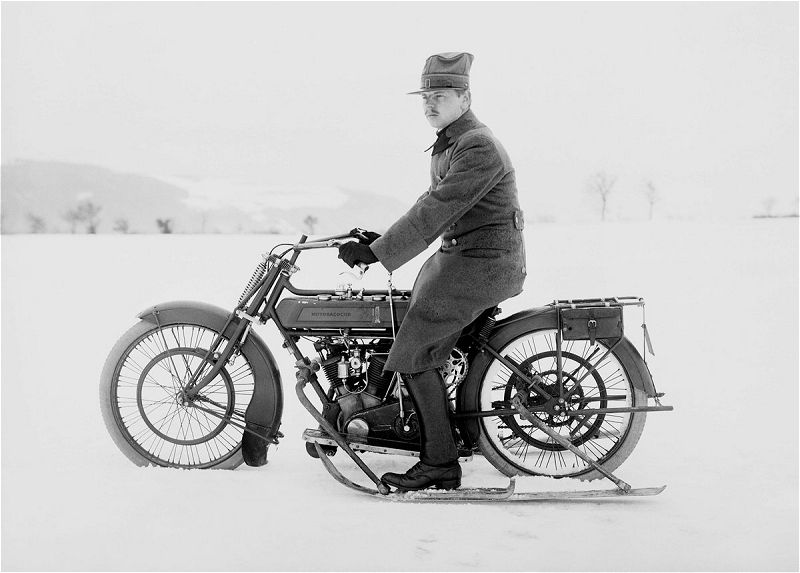
Motosacoche with additional skis for snow winter conditions in the Swiss Alps
Motosacoche's were always built using the highest quality products such as: Terry saddles, Dunlop tyres, Brampton forks or Webb's forks on works- and some production-racers, Timken bearings, AMAC and later AMAL carburettors and twistgrips, Best & Lloyd and Pilgrim oilpumps, Renold's chains and John Bull knee-grips. Early gear-boxes were of Enfield design, with two or three primary-chains. Later Sturmey-Archer, Burman and some Hurth boxes were used.
Only Bosch was good enough to provide the ignition-sparks, Swiss Scintilla on some late-thirties models. Early electric lighting was Swiss Lucifer and others, from the mid-twenties Bosch and finally Scintilla dynamos, lights and horns became standard until WW2.
Motosacoche was once the biggest Swiss motorcycle manufacturer due to the brilliant engineering ideas of Henri and Armand Dufaux.
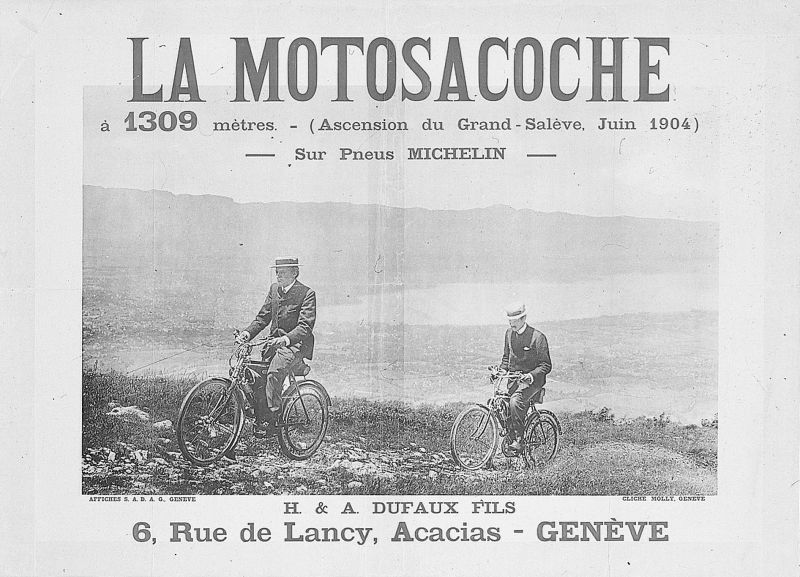
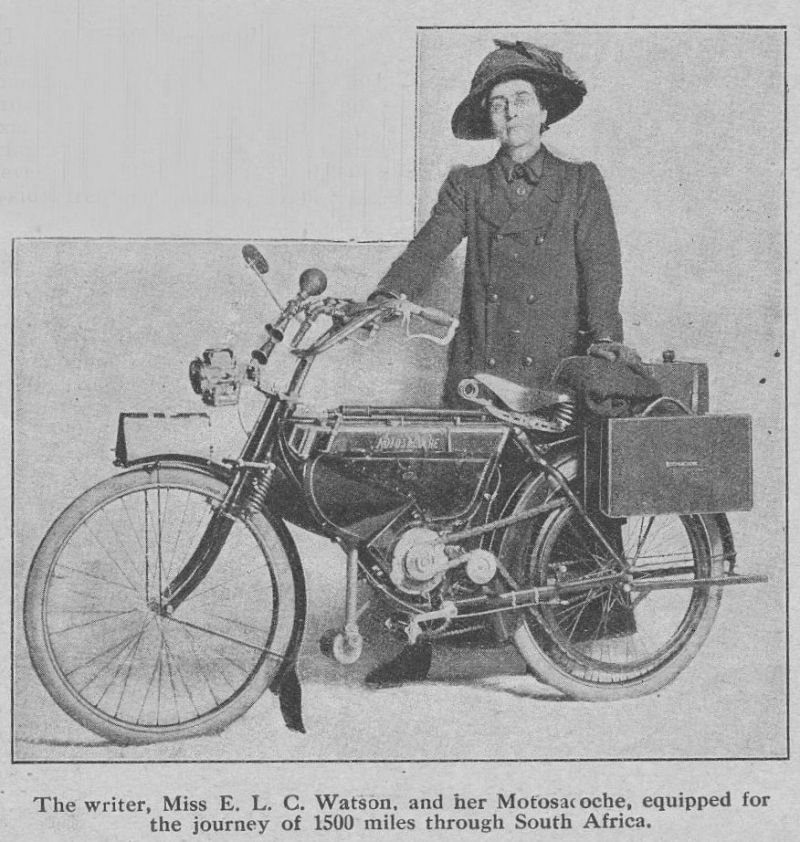
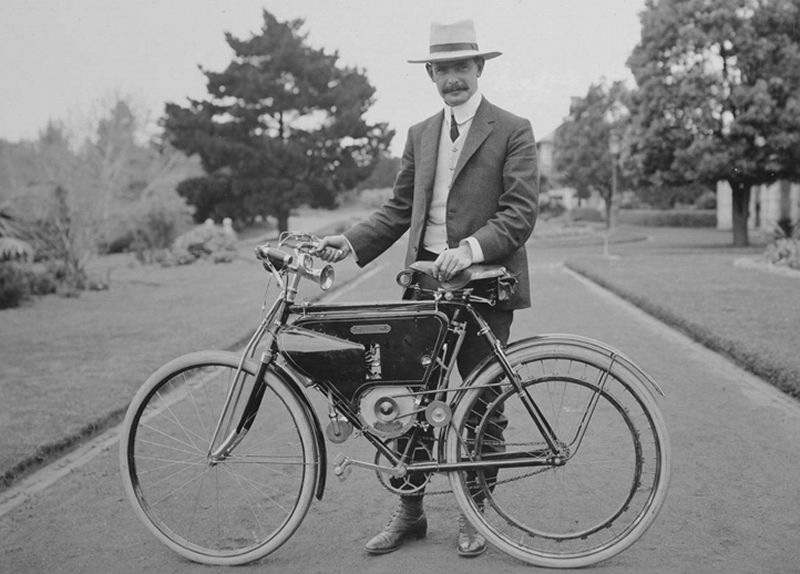
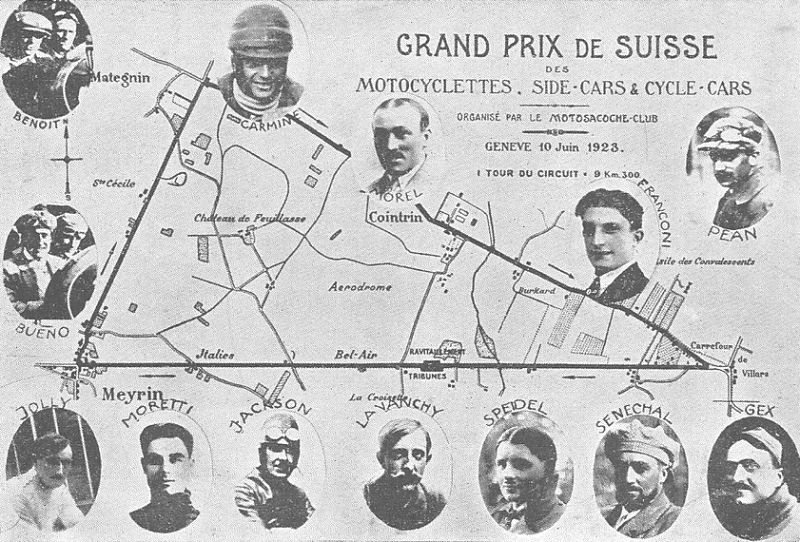
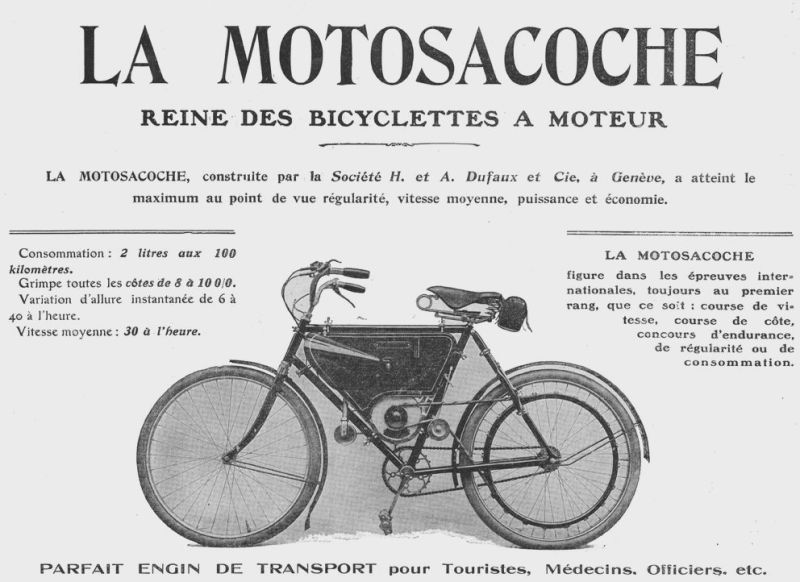
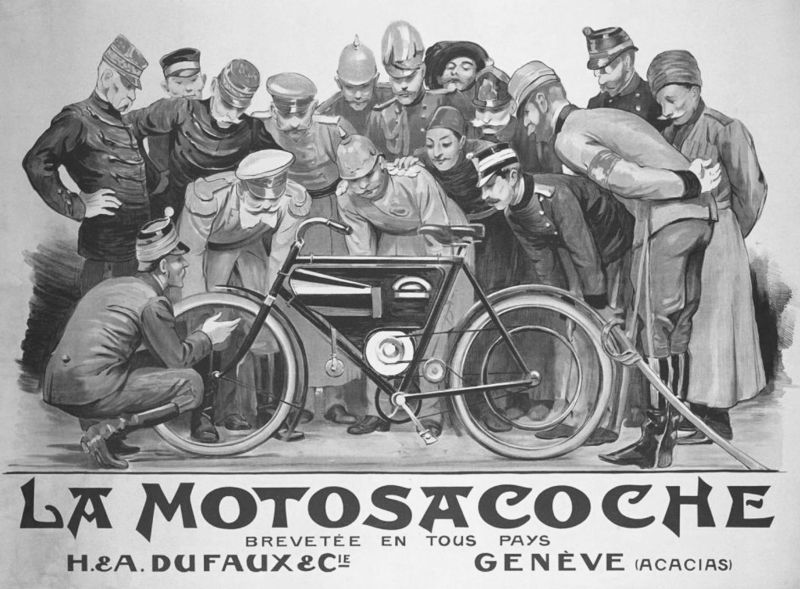
We are looking for the following motorcycles. If you do have any of the below listed vehicles - and you are ready to sell - please Contact Us.
| 200-Series |
|---|
| 210 |
| 212 |
| 300-Series |
| 309 |
| 310 |
| 350 Sport |
| 400-Series |
| 409 |
| 410 |
| Competition |
| 322 |
| 350 |
| 422 |
| 500 |
| D50 Works-Racer |
We buy, sell, broker, locate, consign and appraise exceptional classic, sports and collector Motosacoches'
Contact us when you are serious about buying a fine Motosacoche Motorcycle or to arrange a free and confidential valuation with a view to selling.
